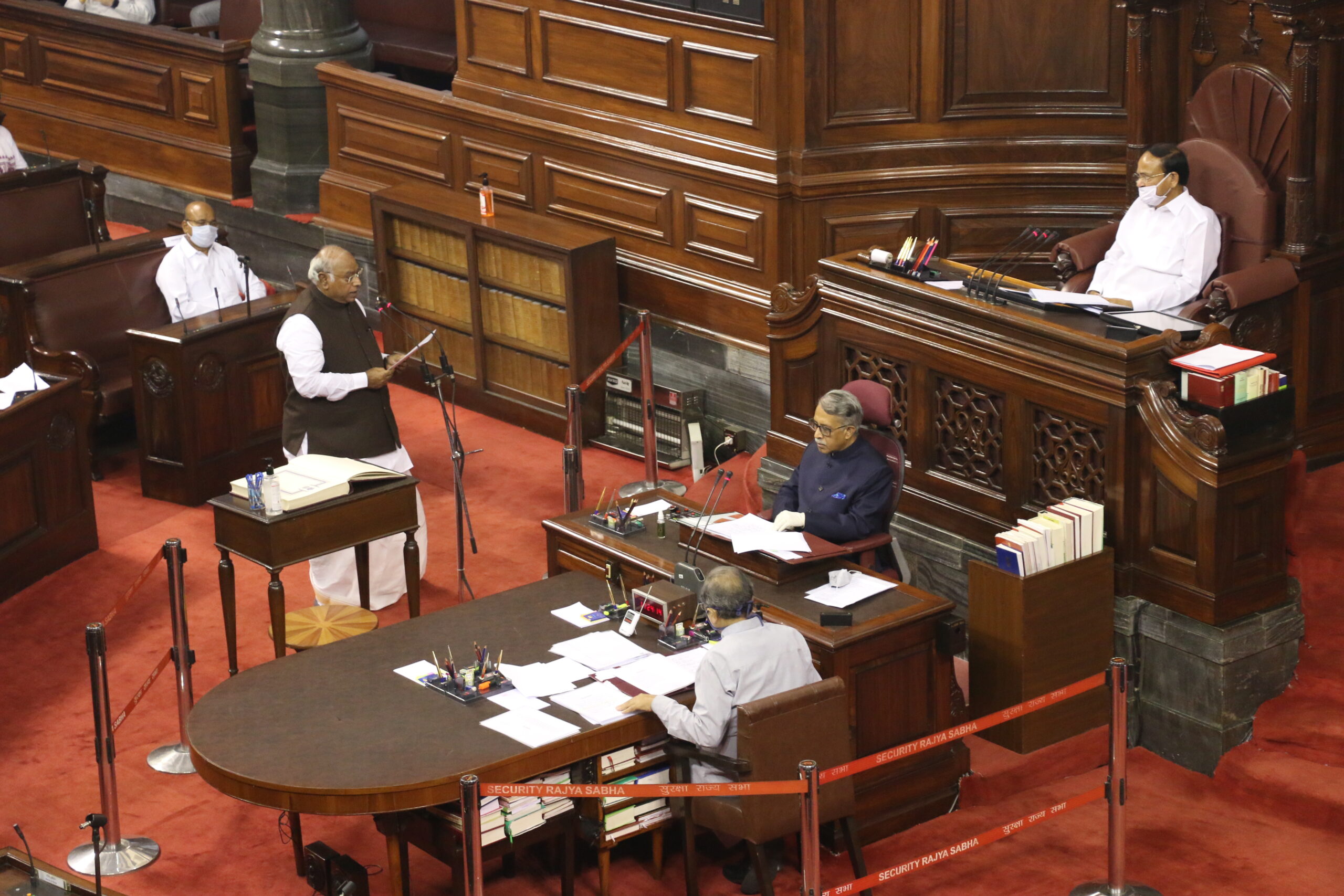India’s Parliament is bicameral. The Constitution of India provides for the Union Legislature, called “Parliament”, through Article 79, to consist of the President and two Houses to be known respectively as the “Council of States”, also known as the Rajya Sabha and the “House of the People”, also known as the Lok Sabha. The two Houses along with the President constitute Parliament [Article 79].
The nature of both houses
The Houses differ from each other in many respects. They are constituted on different principles, and, from a functional point of view, they do not enjoy a co-equal status.
1. Lok Sabha
- Lok Sabha is a democratic chamber elected directly by the people on the basis of adult suffrage. It reflects popular will.
- It has the last word in matters of taxation and expenditure.
- The Council of Ministers is responsible to the Lok Sabha.
2. Rajya Sabha
- Rajya Sabha, on the other hand, is constituted by indirect elections.
- The Council of Ministers is not responsible to the Rajya Sabha.
- Therefore, the role of Rajya Sabha is somewhat secondary to that of Lok Sabha, barring a few powers in the arena of Centre-State relationship.
The purpose of Rajya Sabha
Rajya Sabha is a forum to which experienced public figures get access without going through the din and bustle of a general election which is inevitable in the case of Lok Sabha. It acts as a revising chamber over the Lok Sabha. The existence of two debating chambers means that all proposals and programmes of the Government are discussed twice. As a revising chamber, the Rajya Sabha helps in improving Bills passed by the Lok Sabha.
Although the Rajya Sabha is designed to serve as a Chamber where the States and the Union of India are represented, in practice, the Rajya Sabha does not act as a champion of local interests. Even though elected by the State Legislatures, the members of the Rajya Sabha vote not at the dictate of the State concerned, but according to their own views and party affiliation.
In fact, at one point of time in 1973, a private member’s resolution was to the effect that the Rajya Sabha be abolished.
Composition of Rajya Sabha
The maximum strength of Rajya Sabha is fixed at 250 members, 238 of whom are elected representatives of the States and the Union Territories and 12 are nominated by the President. The seats in the Upper House are allotted among the various States and Union Territories on the basis of population, the formula being one seat for each millions of population for the first five million and thereafter one seat for every two million populations. A slight advantage is, therefore, given to States with small population over the States with bigger population. This is called “weighted proportional representation“.
The system of proportional representation helps in giving due representation to minority groups. The representatives of a State in Rajya Sabha are elected by the elected members of the State Legislative Assembly in accordance with the system of proportional representation by means of a single transferable vote [Article 80(1)(b) and Article 80(4)].
Rajya Sabha is a continuing body. It has nominated members. They are nominated by the President on the advice of Council of Ministers. There is no difference in status between elected and nominated members of Rajya Sabha except that the elected members can participate in the election of the President whereas the nominated members cannot do so.
One-third of its members retire every two years and their seats are filled by fresh elections and nominations.
Rajya Sabha’s special power under Article 249 of the Constitution
The Indian union has been described as the ‘holding together’ of different areas by the constitution framers, unlike the ‘coming together’ of constituent units as in the case of the U.S.A. and the confederation of Canada. Hence, the Rajya Sabha was vested with a contingency based power over state legislatures under Article 249, which contributes to the ‘Quasi-federal’ nature to the government of the Indian union.
Under Article 249(1), if the Rajya Sabha declares by a resolution, supported by not less than two-thirds of it’s members present and voting, that it is necessary or expedient in national interest that Parliament should make laws with respect to any of the matters enumerated in the State list [List II of Seventh Schedule read with Article 246], specified in the resolution, it shall be lawful for parliament to make laws for the whole or any part of the territory of India with respect to that matter while the resolution remains in force.
Article 249 clause (2) and (3) specify the limitations on the enforcement of this provision. Article 251 when read with Article 249 provides that in case of inconsistency between a law made by parliament under Article 249 and a law made by a State legislature, the Union law will prevail to the extent of such inconsistency or ‘repugnancy’. In effect this provision permits the Rajya Sabha to encroach upon the specified legislative competence of a state legislature by declaring a matter to be of national importance.
Though it may have been incorporated as a safeguard in the original constitutional scheme, this power allows the Union government to interfere with the functioning of a State government, which is most often prompted by the existence of opposing party-affiliations at the Central and state level. This bias towards ‘Unitary power’ under normal circumstances is not seen either in U.S.A. or Canada.

[…] – Views of Ambedkar and Krishnamachari The making of ‘Rajya Sabha’- A Brief History Rajya Sabha- Nature, Purpose, Composition and Special Powers How to be an elector in India? Primary […]